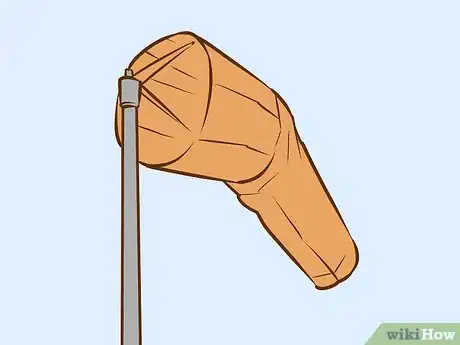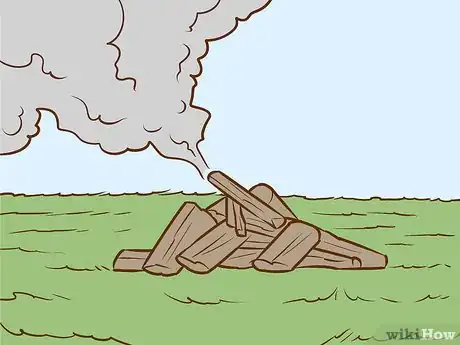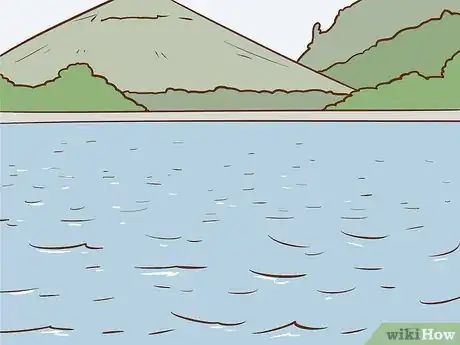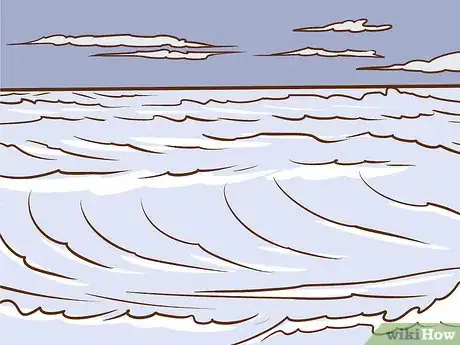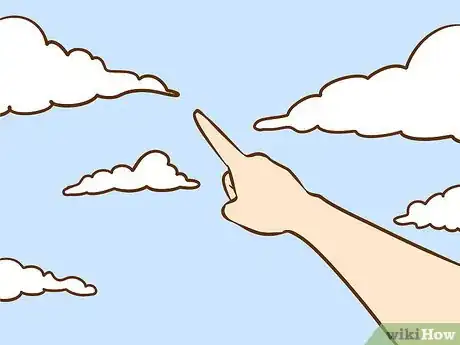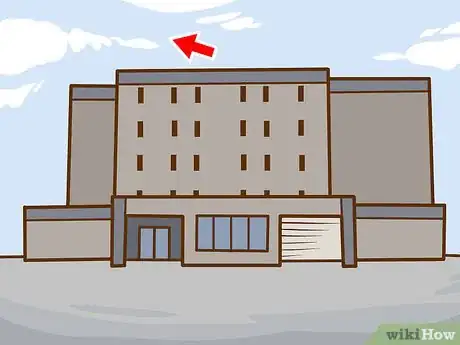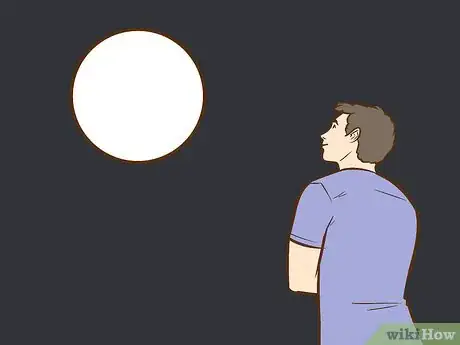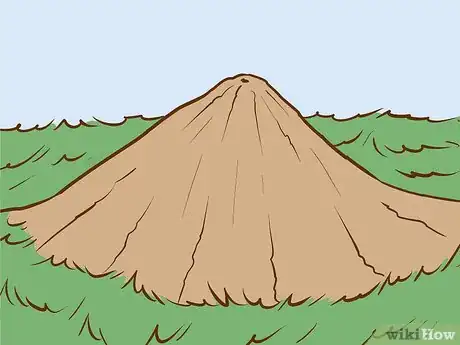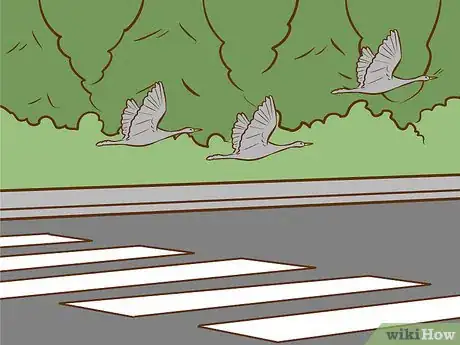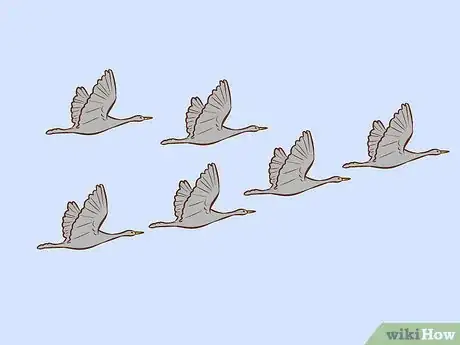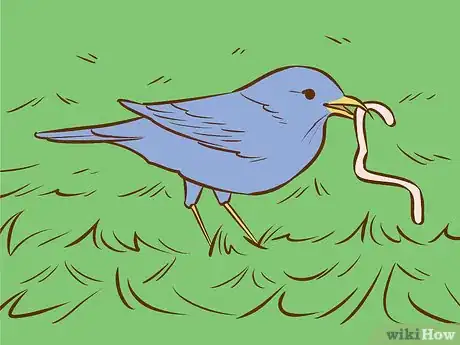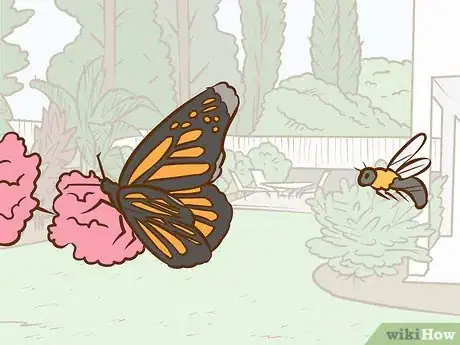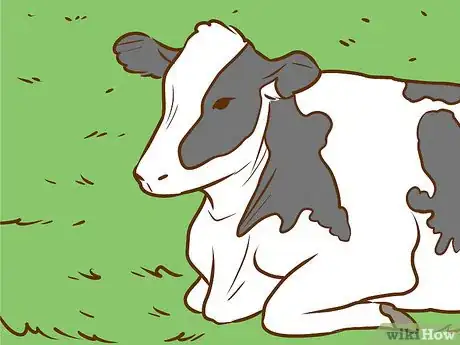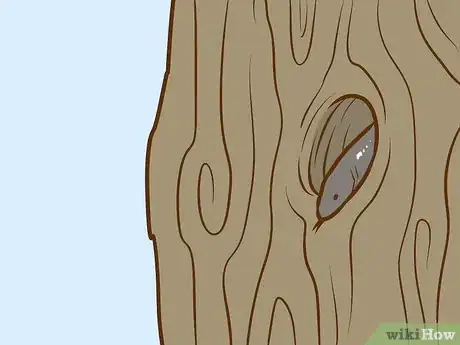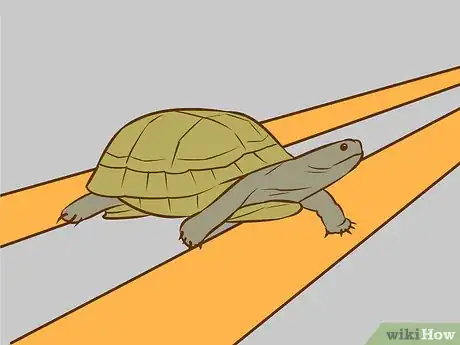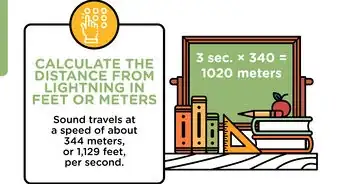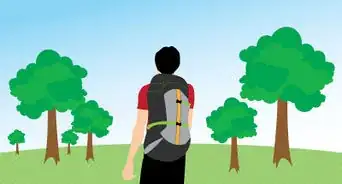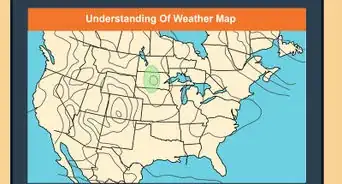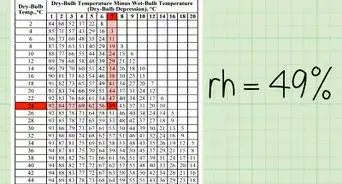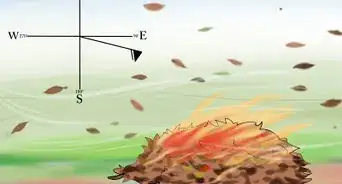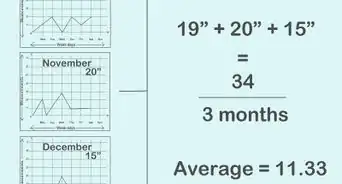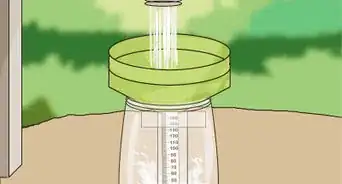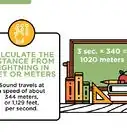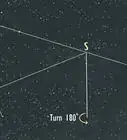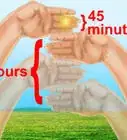This article was co-authored by Meredith Juncker, PhD and by wikiHow staff writer, Danielle Blinka, MA, MPA. Meredith Juncker is a PhD candidate in Biochemistry and Molecular Biology at Louisiana State University Health Sciences Center. Her studies are focused on proteins and neurodegenerative diseases.
There are 12 references cited in this article, which can be found at the bottom of the page.
wikiHow marks an article as reader-approved once it receives enough positive feedback. This article has 20 testimonials from our readers, earning it our reader-approved status.
This article has been viewed 1,160,917 times.
Generally, most of us rely on forecasts to tell us what kind of weather to expect. However, it is possible to predict the weather using your skills of observation and knowledge of weather patterns. Not only can predicting the weather be a fun hobby, it can also be a useful skill if you enjoy outdoor activities, such as hiking or camping. By learning what to look for, you can predict the weather without a forecast or technological device.
Steps
Wind and Air
-
1Detect the direction of the wind. Wind is caused when air moves from a high-pressure area to a low-pressure area. Since weather moves in from the west, westerly winds indicate good weather because they suggest the bad weather is already to your east. Easterly winds suggest that the bad weather is coming toward you.[1]
- You can use grass or flower petals to determine the direction of the wind. Throw your grass or flower petals into the wind and watch the way that it blows or falls.
- You can also detect the direction of the wind by wetting your finger and holding it out. The side of your finger that gets cool will tell you from which direction the wind is blowing.
-
2Watch smoke from a fire. The air pressure determines what direction the smoke will go. In high pressure, the smoke will go directly up into the air. If the pressure is low, it will spiral back down around the fire. If you see the smoke spiraling back down, bad weather is likely on the way.[2]
- When smoke spirals downwards, it means that bad weather is very close. The low-pressure system is already in place over your area.
Advertisement -
3Watch for calm conditions. Before a storm, the low-pressure system can push out the area’s normal wind patterns. This creates a temporary calm before the storm begins. You’ll notice a lack of wind, which creates a stillness over the area. If you're near water, it will be calm and still, as well. This calm indicates a coming storm.
- At this point, you should be able to observe other signs of a storm, such as dark clouds.[3]
-
4
-
5Check for humidity. High humidity often precedes a storm, so watch for signs of high humidity, such as frizzy hair, curling leaves, and swollen wood. These signs can tell you that a storm is on the way.[7]
- Pine cones can also tell you if it’s humid because they will stay closed if the humidity is high but will open if the air is dry.[8]
- If you live in an area that always has high humidity, rely on other observations to predict the weather.
-
6Observe ocean swells. If you're near the ocean, look for ocean swells. These swells can be caused by winds that are blowing a storm system from out over the sea. This could mean that rain is on the way.[9]
Clouds
-
1Look at the shape of the clouds. The types of clouds in the sky can tell you a lot about the weather. In general, clouds that are white and high indicate good weather, and clouds that are dark and low mean rain or storms are on the way.
- White, wispy clouds usually mean that the weather will be clear.
- Flat clouds mean that the air is stable, while fluffy clouds mean that it is unstable.[10]
- Smaller puffy clouds may look calm, but they often build over the course of the day. If you see these clouds, it could mean a storm is brewing.[11]
-
2Observe the position of the clouds. Clouds that look high usually mean that they are farther away but could become a weather threat up to six hours later. Lower clouds mean that bad weather is closer. As the weather threat approaches, you will see the clouds move lower in the sky.[12]
-
3Check the color of the clouds. Clouds can be various shades of white, gray, black, and brown, and each also means something different about the weather.
- Black clouds mean that there is a coming storm that does not have strong winds.
- Brown clouds mean that there is a coming storm that does have strong winds.
- White clouds usually mean good weather, though a storm could be on its way later in the day.[13]
- Gray clouds usually mean a new or a light storm. However, gray skies mean that the storm is affecting a large area and may remain for awhile.[14]
-
4Watch the movement of the clouds. The direction that the clouds are traveling can tell you if weather is on the way. Additionally, you should watch if the clouds are coming together or moving apart.
- Lowering, gathering clouds are a sign of bad weather coming.
- Clouds that are rising and spreading out indicate that the weather is clearing.[15]
The Sky
-
1Check for a red sky in the morning. Weather moves from west to east, while the sun rises in the east and sets in the west. If you see a red sky in the morning, then it means that there is clear weather in the east where the sun is rising, but bad weather in the west, making the sky look red. The bad weather from the west will be moving toward you, as that is how weather patterns work.
- The redness can appear as a bold orange to a deep red.
- If you see a red sky in the evening, you can rest easy. This means that there are clear skies in the west coming toward you, while the bad weather is to the east moving away from you.
- You can use the following rhyme: “Red sky at night is a shepherd’s delight. Red sky in the morning is a shepherd’s warning.”[16]
-
2Look for a rainbow in the west. A rainbow in the west means that the sun’s morning rays are striking moisture to your west, which is the direction from which the weather is moving. This means that a storm is moving your way, indicating bad weather later in the day.
- If you see a rainbow in the east, then it means that the weather has already passed over you, so clear skies are likely ahead.
- Remember the old saying, “Rainbow in the morning gives you fair warning.”[17]
-
3Stare at the moon. Look to see how visible the moon is. If the moon is easy to see in a clear sky, then it could mean that the weather is cooling. It may also mean that a low-pressure system is moving into the area, which clears away dust. This means rain could be on the way. If the moon is visible, look for a wide halo that spreads out from the moon. A halo happens when the moon shines through cirrus clouds, which suggests coming rain.[18]
- Remember the old saying, “Ring around the moon? Rain real soon.” A ring around the moon means a warm front is coming, which usually brings rain. The ring is caused by ice crystals that are passing over the moon.[19]
- A double halo around the moon could signal strong winds in the coming storm.[20]
- Another old saying is, “Clear moon, frost soon.” A clear sky means that there are no clouds to hold in the earth’s heat. This means that the weather will be cooler that night and the next morning, even if it’s not cold enough to frost.[21]
-
4Count the stars. If you suspect a storm is coming, look at the stars. More than ten stars means that any coming storms should be light, while fewer than ten visible stars means that the storm will be heavy.[22]
- A lack of stars means that there is excessive cloud coverage from an oncoming weather system. If many stars are visible, then the sky is clear.
Animal Behaviors
-
1Look for high ant mounds. Before a storm, ants will build up their mounds and create steep sides. If you see raised ant beds, especially if they were lower before, then there may be a storm coming.[23]
-
2Watch for low-flying or roosting birds. When the air pressure falls before a storm, birds feel discomfort in their ears. This causes them to fly lower toward the ground or to perch on lower tree branches or power lines. You may also observe the birds eating ground insects. This behavior suggests that a storm is coming.[24]
- If the birds are flying high in the sky, then there will likely be fair weather.
- If you’re near the sea, look for seagulls perched on the beach, which could indicate that a storm is coming.
- Watch for large groups of roosting birds.
- Birds also become quiet before a storm. Singing and chirping birds could indicate good weather.
-
3Look for bird migrations. Birds can sense air pressure and will time their migrations to good weather. If you see flocks of birds migrating in the sky, then the weather will likely be good that day.
-
4Notice if birds eat during a storm. If a storm is going to be short, birds will usually wait for the rain to end before looking for food. If you see birds eating during a storm, then it will likely last for a long time. Birds can sense the pressure patterns, allowing them to predict the weather.[25]
-
5Search for bees and butterflies. Bees and butterflies return to their homes before a storm for safety. In the case of bees, they also work to preserve the hive. If you don’t see any bees and butterflies when you would expect to - such as in a field of flowers - then there may be a storm coming.[26]
-
6Check cow pastures to see if they are lying down together. Cows usually gather together and lie down in their pasture before a rainstorm. This is likely because it cools down before a storm, and cows like to be close to the ground when the weather cools. Cows lying on the ground is an indication that it may rain.[27]
- This only applies to cows, not other livestock.
-
7Look for snakes. Snakes will leave their nests before bad weather, even if it’s in the middle of wintertime. Seeing snakes in unexpected places or at a time when the snake would normally be in its nest can be a sign of bad weather.
- Snakes can even predict earthquakes. If you see a snake out of its nest behaving erratically, there could be an earthquake coming.[28]
- Snakes usually come out of their nests in sunny weather to warm themselves. They don't like the cold because they are cold-blooded.[29] A snake out of its nest when it's not a warm, sunny day is an indication that bad weather is coming.
-
8Watch tortoises if they are nearby. Tortoises will seek higher ground before a storm, so look for movement to higher locations. You may see them in the road one to two days before a rain.[30]
Expert Q&A
Did you know you can get expert answers for this article?
Unlock expert answers by supporting wikiHow
-
QuestionHow does a tsunami stop?
 Meredith Juncker, PhDMeredith Juncker is a PhD candidate in Biochemistry and Molecular Biology at Louisiana State University Health Sciences Center. Her studies are focused on proteins and neurodegenerative diseases.
Meredith Juncker, PhDMeredith Juncker is a PhD candidate in Biochemistry and Molecular Biology at Louisiana State University Health Sciences Center. Her studies are focused on proteins and neurodegenerative diseases.
Scientific Researcher
-
QuestionHow would I survive a tornado or hurricane without shelter?
 Community AnswerIf it's a tornado, get into a ditch and get in the fetal position and wait for the storm to pass. If it's a hurricane, you need to get to high ground in case there is any flooding, though you'll need to also be careful that wherever you decide to wait it out doesn't expose you to flying debris or falling trees.
Community AnswerIf it's a tornado, get into a ditch and get in the fetal position and wait for the storm to pass. If it's a hurricane, you need to get to high ground in case there is any flooding, though you'll need to also be careful that wherever you decide to wait it out doesn't expose you to flying debris or falling trees. -
QuestionHow can I tell when a tornado is coming?
 Community AnswerUsually the sky will be dark and may have a greenish tint and the air will become very still. You might see wall clouds or a cloud of debris and there will probably be hail.
Community AnswerUsually the sky will be dark and may have a greenish tint and the air will become very still. You might see wall clouds or a cloud of debris and there will probably be hail.
Warnings
- Some types of severe weather, like tornadoes, are very difficult to reliably predict. Be sure to tune in to your local weather forecast to find out how to get to safety if a storm is coming.⧼thumbs_response⧽
- Predicting the weather in this manner is not an exact science. Do not risk your life or others' lives because of these experiments.⧼thumbs_response⧽
References
- ↑ https://science.wonderhowto.com/how-to/weather-forecast-and-weather-predict-without-technology-0119259/
- ↑ https://www.cyclingabout.com/predicting-weather/
- ↑ https://www.cyclingabout.com/predicting-weather/
- ↑ http://archive.hokulea.com/ike/hookele/weather_forecasting.html
- ↑ https://science.wonderhowto.com/how-to/weather-forecast-and-weather-predict-without-technology-0119259/
- ↑ http://undergroundhealthreporter.com/swamp-gas-hydrogen-sulfide/
- ↑ https://www.cyclingabout.com/predicting-weather/
- ↑ http://www.sandiegouniontribune.com/sdut-q-a-why-do-pine-cones-open-and-close-2001feb11-story.html
- ↑ http://www.oceanweatherservices.com/featured_blog_posts/a_mariners_guide_to_waves
- ↑ http://pvs.kcc.hawaii.edu/ike/hookele/weather_forecasting.html
- ↑ https://www.almanac.com/content/weather-sayings-and-their-meanings
- ↑ http://pvs.kcc.hawaii.edu/ike/hookele/weather_forecasting.html
- ↑ http://archive.hokulea.com/ike/hookele/weather_forecasting.html
- ↑ https://www.almanac.com/content/weather-sayings-and-their-meanings
- ↑ http://archive.hokulea.com/ike/hookele/weather_forecasting.html
- ↑ https://www.cyclingabout.com/predicting-weather/
- ↑ https://www.almanac.com/content/weather-sayings-and-their-meanings
- ↑ https://www.outdooraustralia.com/articles/predict-the-weather-without-a-forecast-05041
- ↑ https://www.almanac.com/content/weather-sayings-and-their-meanings
- ↑ http://archive.hokulea.com/ike/hookele/weather_forecasting.html
- ↑ https://www.almanac.com/content/weather-sayings-and-their-meanings
- ↑ http://archive.hokulea.com/ike/hookele/weather_forecasting.html
- ↑ https://www.cyclingabout.com/predicting-weather/
- ↑ https://www.cyclingabout.com/predicting-weather/
- ↑ http://www.nc-mag.com/2012/07/animals-as-weathermen.html
- ↑ https://www.cyclingabout.com/predicting-weather/
- ↑ https://modernfarmer.com/2014/09/cows-really-lie-rainstorm/
- ↑ http://www.nc-mag.com/2012/07/animals-as-weathermen.html
- ↑ https://www.livescience.com/27845-snakes.html
- ↑ http://www.nc-mag.com/2012/07/animals-as-weathermen.html
About This Article
To predict the weather without a forecast, start by figuring out which direction the wind is blowing. Easterly winds suggest that bad weather is heading your way. Next, watch for signs of high humidity, such as frizzy hair, curling leaves, and swollen wood, which may indicate that a storm is close by. Then, check the shape, color, and position of the clouds in the sky. Dark, low clouds usually mean rain is coming! To learn how you can observe animal behavior to predict the weather, read on!
